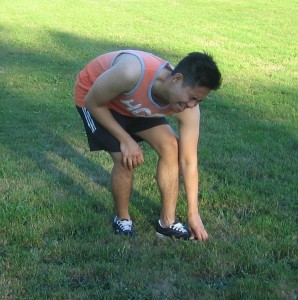Turf toe occurs when the big toe is sprained but it can also affect the surrounding structure such as the ligaments, tendons, nerves, bones and joint surfaces.
The common cause of turf toe is the hyperextension of the joint, but an injury to the surface of the joint can be caused by placing a heavy load on the ball of the foot and by bending the toe excessively forward.
Activities that are performed on synthetic surfaces are coincidental and the toes can get sprained on even on wood or grass. Nevertheless, it is also proven that the combination of artificial surfaces and using highly flexible shoes can increase the risk for turf toe. Take note that lightweight and flexible shoes could not provide adequate protection for the big toe joint.
Who are at risk for turf toe?

Always bear in mind that this injury is likely linked with the activity instead of the surface. Obviously, those who play football face the highest risk for the injury. Turf toe can also occur in any sport such as soccer, basketball, rugby and volleyball since they involve movements that can cause the injury. Take note that individuals who previously sustained turf toe are prone to the injury in the future.
Symptoms of turf toe
The symptoms are categorized based on the severity of the injury sustained by the individual.
- Grade 1 involves a mild sprain, pain that is localized and minimal bruising or swelling.
- Grade 2 involves a possible popping sound when the injury occurs, moderate swelling, tenderness, bruising and loss of motion. There is partial tear of the capsule and the ligaments and there is no injury on the surface of the joint.
- Grade 3 involves evident swelling, bruising and loss of motion. There is complete tear of the capsule and ligament and even possible dislocation.
Treatment for turf toe
The individual must be given enough time to rest in order to prevent further injuries. You must apply an ice pack or cold compress for 15-20 minutes at a time several times in day. If you want to learn how to properly use ice on injuries, click here.
Elevate the affected part 2-3 hours in a day and at night if possible. You can even provide over-the-counter medications such as ibuprofen, aspirin, naproxen and ibuprofen to minimize the pain and inflammation.
Individuals who sustained an injury for the first time need 3-4 weeks of rest. As for severe cases, changes in the activity might be required.
Preventing turf toe
Even though it is not possible to completely protect the feet from getting turf toe, you can prevent jamming the big toe into hard surfaces. It is important to wear shoes that properly fit and have rigid soles that can protect the joint at the base of the big toe. If possible, the individual must avoid playing in poorly maintained fields.
